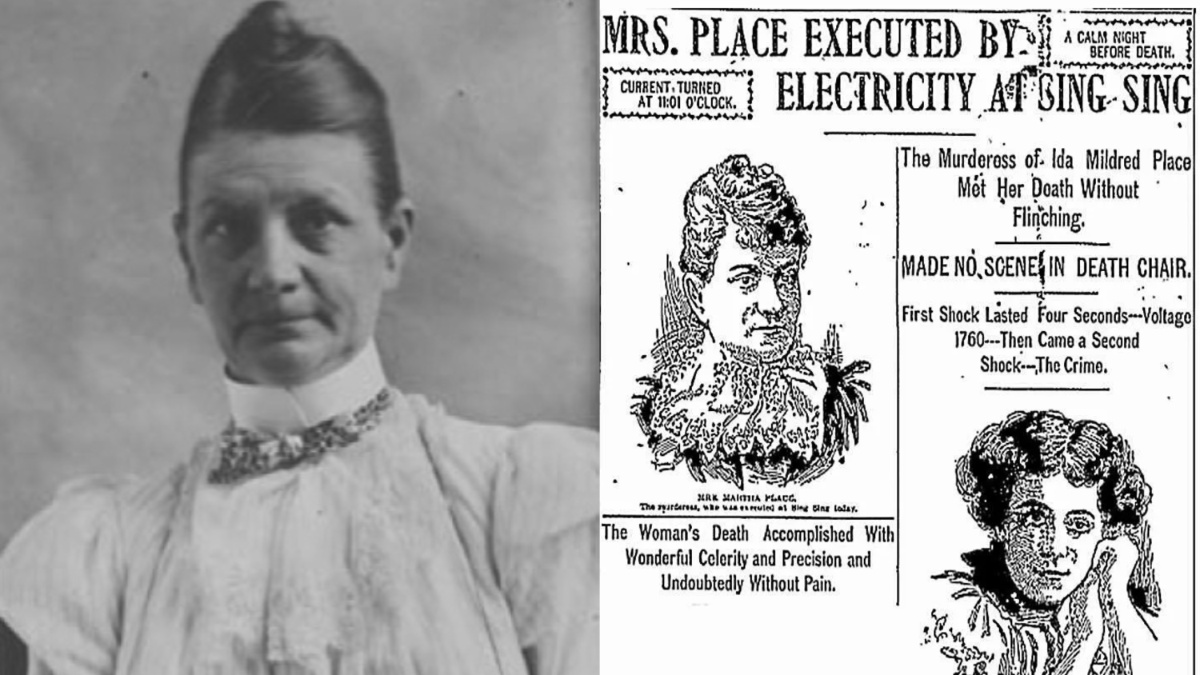Capital punishment in the United States has a long, complicated, and gruesome history, and, well, its methods had to start somewhere.
In the case of the electric chair, Martha Place was the first woman to ever be executed by this method. Here is what she did to warrant such a sentence.
(As an interesting aside, Place was not the first woman to be sentenced to die by the electric chair. That dubious distinction goes to serial killer Lizzie Halliday, convicted in 1894. Place wasn’t the second, either; Maria Barbella got her sentence in 1895. Both Halliday and Barbella escaped the electric chair by commutation and acquittal, respectively.)
Martha Place’s Grisly Murder
On February 7, 1898, Place murdered her stepdaughter Ida and nearly killed her husband William. It wasn’t a moment that came completely out of nowhere; after Martha married William to help take care of Ida (she was originally William’s housekeeper), it was rumored that Martha was jealous of Ida and threatened to kill the child on at least one occasion, prompting William to call the police.
It would appear all the signs were there for William, too. Martha had a quick temper and fought with other family members, all of whom warned William not to marry his new housekeeper.
On the night of the murder, Martha attacked Ida while William was gone. William was an amateur photographer, so he casually had acid lying around the house (which was used in photography at the time). Martha attacked Ida with the acid, throwing it in her face, and then suffocating her.
When William arrived home, he was met with an axe-wielding Martha, who nearly murdered him as well, striking him in the head before he could escape. William managed to get away to the police, who found a horrific scene at the residence. Martha was lying on the floor with gas from broken gas limps filling the room. She appeared to be unconscious, but was ultimately suspected to be faking the whole thing.
Upstairs, the police found Ida Place’s body. She had been dead since the early morning and it looked like her suffused, discolored eyes looked like Martha had tried to gouge them.
Martha Place’s Trial and Conviction
Martha’s trial began on July 5, 1898. She pleaded not guilty by reason of insanity (the jury didn’t buy that and she was convicted of first-degree murder), and there was a significant debate over whether the electric chair was an appropriate form of execution for a woman. Elizabeth Cady Stanton, a leader of the women’s rights movement, argued Martha shouldn’t be executed due to a woman’s general helplessness in the structure of current society.
Was a Previous Head Injury to Blame?
It’s clear that Martha Place needed mental help, the type that was simply unavailable in the late 19th century. When she was 23, Place was hit in the head by a sleigh, and according to her brother, she never completely recovered from the accident. Knowing what we know now about head injuries, Place mostly likely suffered a traumatic brain injury that was left untreated, leaving her unable to heal.
Teddy Roosevelt’s Role in Martha Place’s Execution
Before he became the 26th president, Theodore Roosevelt was the governor of New York, and just so happened be serving in that role when the time came to potentially commute Place’s death sentence. Though he got some doctors together to examine Martha and her mental stability, Roosevelt ultimately determined she was sane enough to be executed.
Place was executed on March 20, 1899 at Sing Sing Prison in New York. And in case you’re wondering, William Kemmler was the first person ever executed by the electric chair, and it was a sickening eight-minute ordeal that did not go smoothly at all.
